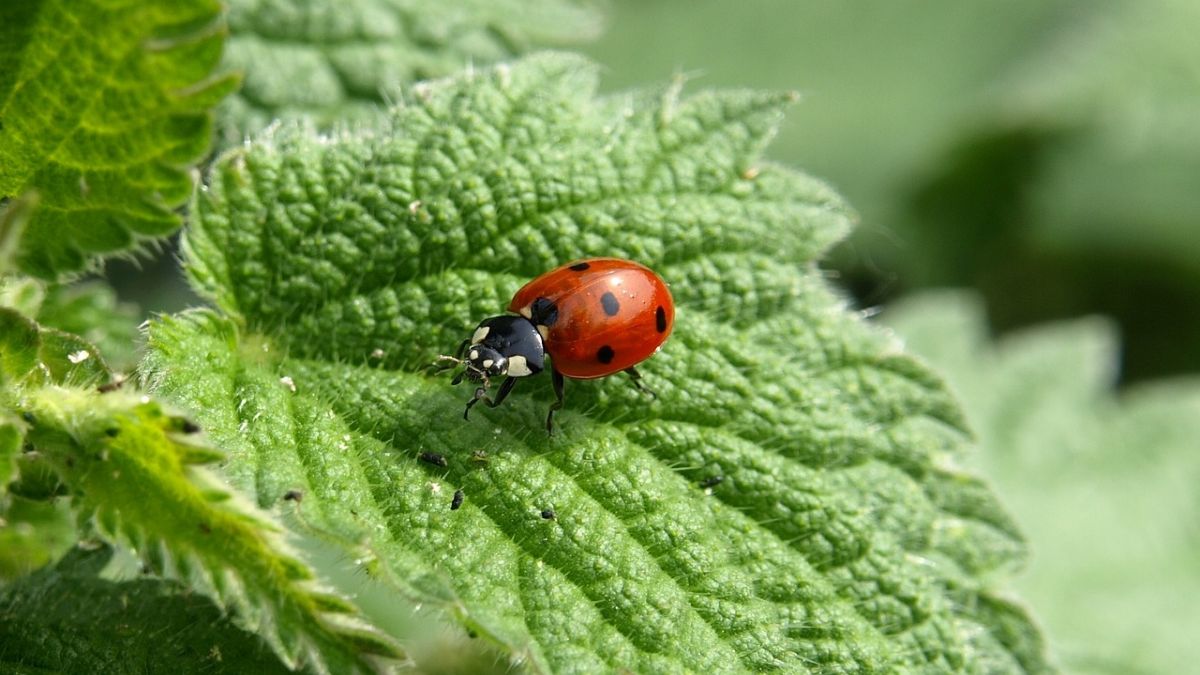Advertisement
Hey plant pals, having trouble keeping your prized blooms and veggies safe from creepy crawlies and mysterious mildews? Been there, done that (mostly the "done that" part).
My once-majestic tomato plants were decimated by hornworms last year – those things are basically the Godzilla of the garden! But fear not, fellow flora fanatics!
Today we're diving into the world of garden foes, learning how to identify them and, more importantly, how to send them packing (or squishing them, depending on your preferred method).
Identifying Common Garden Pests
First up, the bad guys with legs (or lots of them). Aphids, those tiny sap-sucking green (or black, or red) ninjas, love to munch on your plants' new growth. Spot curled leaves or sticky residue? You've got an aphid party going on.
No worries, though! Release some ladybug assassins (aka ladybugs) or blast them off with a water hose – nature's pressure washer!
Speaking of blasts from the past, have you seen any shiny green beetles with a copper tan? Those are Japanese beetles, and they have a serious sweet tooth for roses and grapes.
Pick them off by hand (think "garden Whack-a-Mole") or lure them away with pheromone traps – just don't attract more than you can handle!
Now, brace yourselves for the ultimate plot twist: the villain might already be living inside your plants! Tomato hornworms, those giant green caterpillars with a taste for destruction, can devour a tomato plant faster than you can say "salsa."
Keep an eye out for irregular holes in leaves or missing fruit, and if you spot the culprit, hand-pick it or use a natural bug spray containing Bacillus thuringiensis (Bt) – basically, a tummy ache in a bottle for hornworms.

Identifying Common Plant Diseases
But wait, there's more! Our leafy friends can also fall victim to sneaky diseases. Powdery mildew, a white, powdery fungus, loves to coat roses, squash, and anything else in its path.
Good air circulation and avoiding overhead watering can help prevent it, but if it strikes, a baking soda solution or a specific fungicide can save the day.
My friend swears by the baking soda spray – it's like a DIY spa treatment for plants! Another rose enemy is black spot, showing up as black circles on leaves.
Give your roses plenty of sunshine and well-drained soil, and if needed, use a fungicide specifically designed for black spot.
One friend of mine is a black spot whisperer – her roses are flawless, and her secret weapon? Being vigilant and using a little fungicide when necessary.
Advertisement
Organic and Natural Control Methods
Now, before you reach for the harsh chemicals, listen up! There are tons of natural ways to keep your garden healthy. Companion planting is like creating a plant posse – certain plants work together to deter pests or attract good guys like ladybugs.
For instance, marigolds near tomatoes repel nematodes, while dill and fennel attract the ladybug cavalry.
Another fantastic option is insecticidal soap or horticultural oil – made from natural ingredients, they suffocate pests or disrupt their cells. Just follow the instructions and avoid spraying in the hot sun.
My friend keeps a bottle of insecticidal soap on hand – it's her gentle giant against the aphid army!
And let's not forget the age-old method of hand-picking! For small infestations of caterpillars or beetles, grab your gloves and get squishing (or relocate them humanely, if you're feeling zen).
It's a chance to get some fresh air and bond with your plants, kind of like a game of "Where's Waldo?" for gardeners, but with a more satisfying ending (for you, at least).

Staying Vigilant and Proactive
Of course, the best defense is a good offense. Keeping your garden clean by removing dead plant material, maintaining healthy soil with compost, and choosing disease-resistant plants are all lines of defense against future foes.
Speaking of soil, I have a friend who's a total soil nerd – she's constantly testing and amending her soil to keep it nutrient-rich. The result? A thriving, lush garden – all thanks to a healthy foundation.
Remember, even the greenest thumbs face challenges. The key is to be vigilant, act quickly when you see a problem, and keep trying different methods.
With a little knowledge and a lot of plant love, you can create a garden that thrives, no matter what creepy crawlies or sneaky diseases try to crash the party.

Happy gardening, and may your green haven become a haven of health and happiness for you and your flourishing flora!
After all, a thriving garden isn't just about keeping the bad guys away – it's about creating a beautiful, life-giving space that brings you joy.
So, grab your tools, embrace the challenge, and get ready to witness the incredible resilience of nature (and maybe unleash your inner ladybug liberator or hornworm hand-to-hand combatant along the way).
Remember, a little sweat, a sprinkle of knowledge, and a whole lot of plant love is the recipe for a garden victory dance! Now get out there and conquer those garden foes – your plants (and maybe even your neighbors) will thank you for it!
Advertisement





